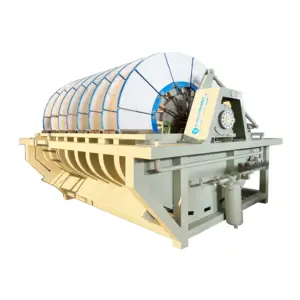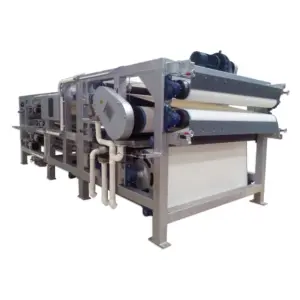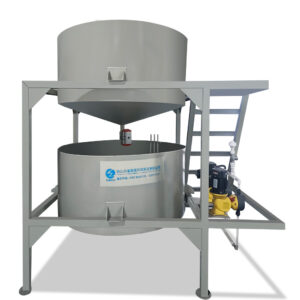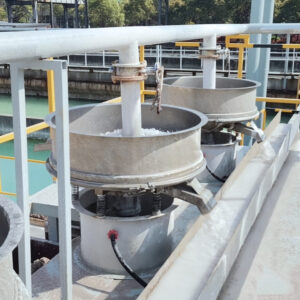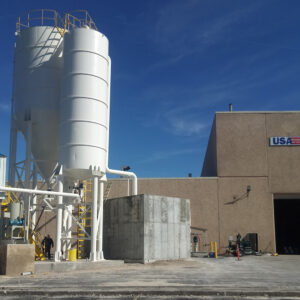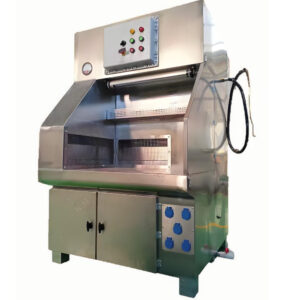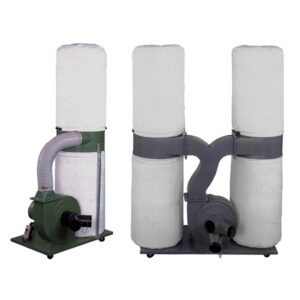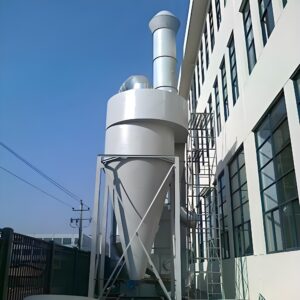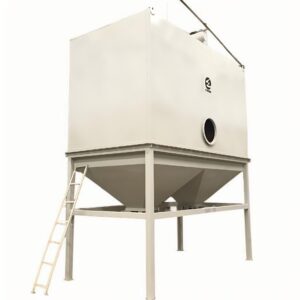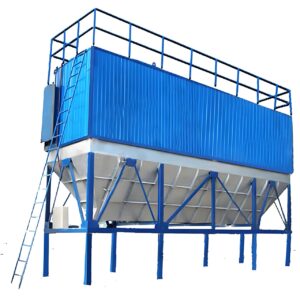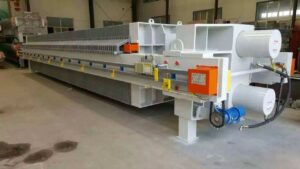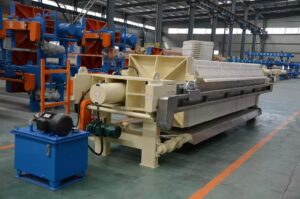Are you struggling with space constraints in your wastewater treatment facility while needing to maintain optimal settling performance? Traditional horizontal clarifiers often consume valuable real estate, making it difficult to expand treatment capacity or implement new installations in urban environments. This limitation becomes even more critical when dealing with high-volume industrial wastewater or municipal treatment systems where land availability is at a premium.
The consequences of inadequate sedimentation capacity can be severe. Poor settling performance leads to increased suspended solids in effluent, potential regulatory violations, and downstream treatment system overload. Without proper space utilization, facility operators face costly expansion projects, reduced treatment efficiency, and compromised environmental compliance. These challenges demand innovative solutions that maximize performance within constrained footprints.
This comprehensive guide explores sedimentation tower technology as a space-efficient solution for modern wastewater treatment challenges. We’ll examine vertical tower configurations, optimization strategies, and practical implementation considerations that enable facilities to achieve superior settling performance while minimizing space requirements.
What is a Sedimentation Tower and How Does It Work?
A sedimentation tower represents an advanced approach to solid-liquid separation in wastewater treatment, utilizing vertical space to achieve efficient particle settling within a compact footprint. Unlike conventional horizontal clarifiers, these systems leverage gravitational forces through increased height rather than extensive surface area.
Understanding Vertical Sedimentation Tower Principles
Vertical sedimentation towers operate on the fundamental principle of gravity settling, enhanced through optimized hydraulic design and flow distribution. The tower configuration creates multiple settlement zones with varying retention times, allowing for improved particle capture efficiency across different size ranges.
The settling process begins as wastewater enters the tower’s upper section through carefully designed inlet distributors. As particles descend through the tower height, they encounter reduced upward velocity zones that facilitate capture. Research from the Water Environment Federation indicates that properly configured vertical systems can achieve 85-95% suspended solids removal efficiency, comparable to horizontal clarifiers while occupying 60-70% less ground area.
Key performance factors include:
- Hydraulic loading rates: Typically 0.5-2.0 m³/m²/hr for optimal performance
- Detention time: 1.5-3.0 hours depending on particle characteristics
- Upflow velocity: Maintained below 1.0 m/hr to prevent particle resuspension
Key Components of Wastewater Sedimentation Systems
Modern vertical clarifier systems incorporate sophisticated components designed for reliable operation and maintenance accessibility. The primary elements include inlet distribution systems, settling zones, sludge collection mechanisms, and effluent withdrawal systems.
Inlet distributors utilize perforated pipes or specialized nozzles to ensure uniform flow distribution across the tower’s cross-section. This uniform distribution prevents short-circuiting and maintains consistent settling conditions throughout the system. Advanced designs incorporate adjustable flow control mechanisms that adapt to varying influent conditions.
The settling zone represents the tower’s core operational area, featuring optimized geometry to maximize particle capture while minimizing hydraulic disturbances. Many systems incorporate inclined plate settlers or tube settlers to increase effective settling area within the vertical configuration.
| Component | Function | Typical Specifications |
|---|---|---|
| Inlet Distribution | Flow equalization | 10-20 inlet points per m² |
| Settling Zone | Primary separation | 8-15 m height |
| Sludge Collection | Solids removal | 2-4% underflow concentration |
| Effluent System | Clarified water withdrawal | <30 mg/L TSS |
How to Configure a Vertical Sedimentation Tower Setup?
Proper sedimentation tower configuration requires careful consideration of hydraulic parameters, structural design, and operational requirements. The configuration process involves determining optimal dimensions, flow patterns, and component sizing based on specific treatment objectives.
Essential Configuration Parameters
Tower diameter and height represent critical design parameters that directly impact settling performance. Industry experience suggests that diameter-to-height ratios between 1:3 and 1:5 provide optimal hydraulic conditions for most applications. Oversized diameters can create dead zones and reduce settling efficiency, while undersized configurations may result in excessive upflow velocities.
Flow rate calculations must account for peak hydraulic loading conditions while maintaining acceptable performance during normal operations. According to recent studies by the International Water Association, vertical towers can handle 20-30% higher peak flows than horizontal clarifiers due to their improved hydraulic characteristics.
As one industry expert notes, “The key to successful vertical tower configuration lies in balancing hydraulic efficiency with operational flexibility. Systems must accommodate flow variations while maintaining consistent treatment performance.”
Flow Distribution and Hydraulic Considerations
Achieving uniform flow distribution represents one of the most critical aspects of vertical tower design. Poor distribution creates preferential flow paths that reduce effective settling volume and compromise treatment efficiency. Modern wastewater treatment systems incorporate advanced distribution technologies to address these challenges.
The design process involves computational fluid dynamics modeling to optimize inlet configurations and minimize hydraulic disturbances. Successful installations utilize multiple inlet points positioned to create laminar flow conditions throughout the settling zone.
Temperature stratification can significantly impact settling performance, particularly in towers exceeding 12 meters in height. Thermal mixing systems or strategic inlet positioning help maintain uniform conditions and prevent density-driven flow patterns that could disrupt settling.
What Are the Advantages of Vertical Clarifier Systems?
Vertical clarifier systems offer compelling advantages for modern wastewater treatment facilities, particularly where space constraints limit conventional horizontal designs. These benefits extend beyond simple space savings to include operational and economic advantages.
Space Efficiency and Footprint Benefits
The most immediately apparent advantage of vertical tower configurations is their dramatically reduced footprint requirements. Typical installations require 50-70% less ground area compared to equivalent horizontal clarifiers, making them ideal for urban installations or facility expansions.
A recent case study from a municipal treatment plant in Singapore demonstrated these space advantages. The facility replaced aging horizontal clarifiers with vertical towers, increasing treatment capacity by 40% while reducing the occupied area by 60%. This transformation enabled the plant to meet growing demand without costly site expansion.
Land cost considerations make vertical systems particularly attractive in high-value urban areas. While tower construction costs may be 10-15% higher than horizontal alternatives, the reduced land requirements often result in overall project savings of 20-30%.
Operational Performance Metrics
Vertical sedimentation towers demonstrate superior performance characteristics in several key areas. Their enhanced settling efficiency results from optimized hydraulic conditions and increased effective settling depth. Performance data from multiple installations shows:
- Suspended solids removal: 90-95% (vs. 85-90% for horizontal clarifiers)
- Hydraulic loading capacity: 25-35% higher than conventional designs
- Sludge concentration: 15-20% higher underflow concentrations
- Energy consumption: 10-15% reduction due to improved hydraulic efficiency
However, it’s worth noting that vertical systems may require more sophisticated control systems and regular maintenance of height-related components. These considerations must be balanced against the performance benefits when evaluating system selection.
How to Optimize Sedimentation Tower Performance?
Achieving optimal performance from wastewater sedimentation systems requires ongoing attention to operational parameters, maintenance protocols, and system adjustments. Successful optimization combines proactive monitoring with responsive management strategies.
Design Optimization Strategies
Performance optimization begins with proper initial design but continues through operational refinements. Key optimization areas include flow distribution adjustments, settling zone modifications, and sludge management protocols.
In our experience working with industrial clients, facilities achieving the highest performance consistently monitor and adjust hydraulic loading rates based on influent characteristics. This dynamic approach enables systems to maintain optimal efficiency across varying operating conditions.
| Optimization Parameter | Target Range | Monitoring Frequency |
|---|---|---|
| Hydraulic Loading | 0.8-1.5 m³/m²/hr | Continuous |
| Sludge Blanket Level | 1.5-2.5 m from bottom | Daily |
| Effluent Turbidity | <10 NTU | Continuous |
| pH Control | 6.5-8.5 | Continuous |
Advanced installations incorporate automated control systems that continuously adjust operating parameters based on real-time performance data. These systems can improve efficiency by 15-25% compared to manual operation while reducing operator workload.
Maintenance and Troubleshooting
Preventive maintenance protocols for vertical towers focus on components unique to the vertical configuration. Regular inspection of inlet distributors, settling zone equipment, and sludge collection systems prevents performance degradation and extends system life.
Common operational challenges include inlet plugging, uneven flow distribution, and sludge compaction issues. Early detection through monitoring programs allows for prompt corrective action before performance impacts occur.
Professional maintenance programs typically include quarterly detailed inspections, annual equipment overhauls, and predictive maintenance using vibration analysis and performance trending. These comprehensive approaches reduce unplanned downtime by 60-80% compared to reactive maintenance strategies.
What Challenges Should You Consider with Vertical Sedimentation?
While vertical sedimentation offers significant advantages, successful implementation requires careful consideration of inherent challenges and limitations. Understanding these factors enables informed decision-making and proper system selection.
Technical Limitations and Solutions
Vertical sedimentation tower installations face height-related challenges that don’t affect horizontal systems. Structural requirements increase significantly for towers exceeding 15 meters, requiring specialized foundation design and seismic considerations in applicable regions.
Access for maintenance represents another consideration, particularly for components located at height. Modern designs incorporate permanent access systems, lifting equipment, and remote monitoring capabilities to address these challenges. It’s worth noting that these access requirements can increase initial installation costs by 8-12%.
Pumping requirements for sludge handling may be more complex due to increased static head. However, the higher sludge concentrations achieved often offset increased pumping costs through reduced sludge volumes.
Cost and Implementation Factors
While vertical systems offer long-term economic advantages, initial implementation costs may be higher than horizontal alternatives. Construction complexity, specialized equipment, and enhanced structural requirements contribute to these increased costs.
A comprehensive cost analysis should consider:
- Initial capital investment (typically 10-20% higher)
- Land acquisition savings (often 40-60% reduction)
- Operating cost advantages (5-15% lower)
- Maintenance accessibility factors
Recent industry data suggests that vertical systems achieve cost parity with horizontal designs within 5-7 years of operation when land costs are factored appropriately. For facilities with limited expansion capability, the value proposition becomes even more compelling.
As noted by a leading wastewater treatment consultant, “The decision between vertical and horizontal clarification isn’t just about technical performance—it’s about long-term facility strategy and land use optimization.”
Conclusion
Sedimentation tower technology represents a transformative approach to wastewater treatment, offering superior space efficiency without compromising treatment performance. Through optimized vertical configurations, these systems achieve 90-95% suspended solids removal while requiring 50-70% less ground area than conventional horizontal clarifiers.
The key advantages include enhanced settling efficiency, reduced footprint requirements, and improved operational flexibility. While initial implementation costs may be higher, the combination of land savings, operational benefits, and long-term performance advantages typically provides compelling returns on investment.
For facilities facing space constraints, capacity expansion needs, or seeking to optimize treatment performance, vertical sedimentation towers offer a proven solution. Success depends on proper configuration, ongoing optimization, and comprehensive maintenance programs that address the unique requirements of vertical systems.
Looking forward, advancing automation technologies and improved materials will further enhance the attractiveness of vertical clarifier systems. The integration of smart monitoring systems and predictive maintenance capabilities will likely reduce operational complexity while improving performance reliability.
Consider your facility’s specific requirements, site constraints, and long-term growth plans when evaluating sedimentation tower implementation. The investment in vertical technology today positions your facility for efficient, sustainable wastewater treatment well into the future.
For comprehensive wastewater treatment solutions and expert guidance on vertical sedimentation systems, PORVOO Clean Tech offers proven expertise in designing and implementing advanced treatment technologies tailored to your specific requirements.
Frequently Asked Questions
Q: What is a sedimentation tower setup in vertical tower configuration?
A: A sedimentation tower setup in vertical tower configuration is a system designed to separate suspended solids from liquids by gravity settling within a tall, vertical structure. This setup promotes efficient sedimentation as water or wastewater flows downward through the tower, allowing solids to settle at the bottom for removal. The vertical configuration optimizes space, enhances settling efficiency, and is commonly used in water treatment and industrial processes.
Q: How is the installation of a sedimentation tower with vertical configuration typically done?
A: Installation involves several key steps:
- Site preparation to ensure clear, stable space
- Installation of brackets or support structures inside the tower
- Careful transport and assembly of sedimentation components (such as tube settlers) on the brackets
- Securing components with bolts and fasteners to ensure stability
- Adjustment and calibration for optimal settling performance
Following manufacturer instructions closely is essential for safety and performance.
Q: What are the benefits of using a vertical tower configuration for sedimentation?
A: Benefits include:
- Space-saving design suitable for limited footprints
- Improved settling efficiency due to controlled flow dynamics
- Easier maintenance access to components like tube settlers
- Enhanced removal of suspended solids, improving water clarity and quality
- Flexibility to integrate with other treatment processes or modular expansions
Q: What maintenance practices are important for sedimentation towers in vertical setups?
A: Important maintenance includes:
- Regular inspection of structural brackets and fasteners for integrity
- Cleaning settled solids from the basin to prevent buildup
- Monitoring water levels to avoid pump cavitation or overflow
- Adjusting float valves or level sensors to maintain proper water depth
- Checking for leaks or damage in tube settlers and connections
Q: How does the vertical tower configuration affect sedimentation efficiency compared to horizontal setups?
A: Vertical configurations enhance sedimentation efficiency by maximizing gravitational settling distance within a compact footprint. This leads to better separation of solids as the liquid moves downward through carefully arranged settling media. It also facilitates modular installation of components like tube settlers, which improve particle capture versus traditional horizontal clarifiers.
Q: What design considerations are crucial for setting up a sedimentation tower in vertical configuration?
A: Key design factors include:
- Accurate measurement of site dimensions for installation and maintenance access
- Proper selection and positioning of sedimentation media to optimize flow and settling
- Ensuring structural support can withstand the weight and forces on the tower
- Incorporating adjustable water level controls for operational stability
- Planning for ease of component assembly, cleaning, and future upgrades
This logical progression of questions and answers provides a comprehensive overview of the sedimentation tower setup using a vertical tower configuration, meeting SEO needs by naturally integrating the primary keyword throughout.
External Resources
- Building a Vertical Hydroponic Tower | Oklahoma State University – A detailed, step-by-step guide for constructing a vertical tower system, including setup recommendations and vertical configuration considerations for effective hydroponic sedimentation or gardening purposes.
- Hydroponic Tower: The Guide to Vertical Gardening Success – Offers essential instructions and insights for building DIY vertical towers, covering construction, setup, and vertical design configurations that optimize water and sediment movement.
- Electrical Transmission Towers Explained – saVRee – Explains tower configurations and vertical arrangements in transmission systems, providing foundational understanding applicable to the engineering of vertical tower setups.
- Electrical Transmission Tower: Types, Design & Parts – Describes the structural components and vertical configuration of towers, relevant for understanding vertical setup principles and design considerations.
- Vertical Flow Reactor – Design and Applications – Provides a technical overview of vertical flow reactor configurations, analogous to tower setups for sedimentation or separation in various engineering fields.
- Design and Analysis of Water Sedimentation Tanks – Discusses the principles, setup, and vertical configurations for sedimentation systems, offering valuable context for tower-based sedimentation or treatment applications.
